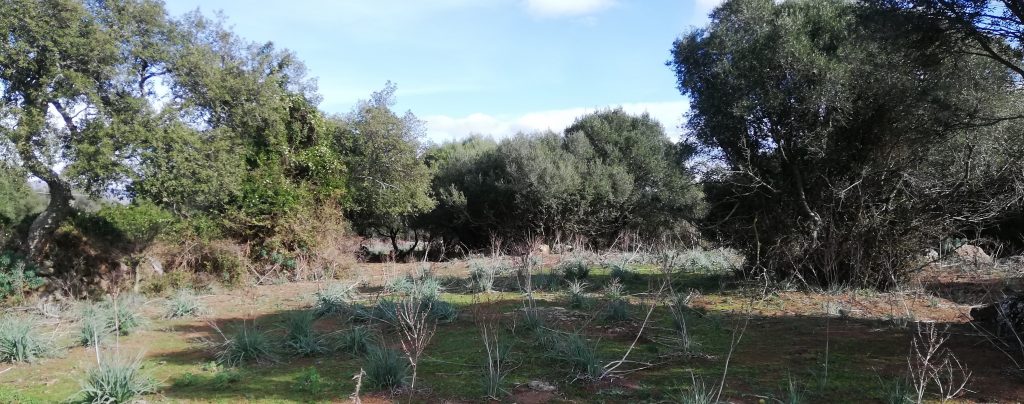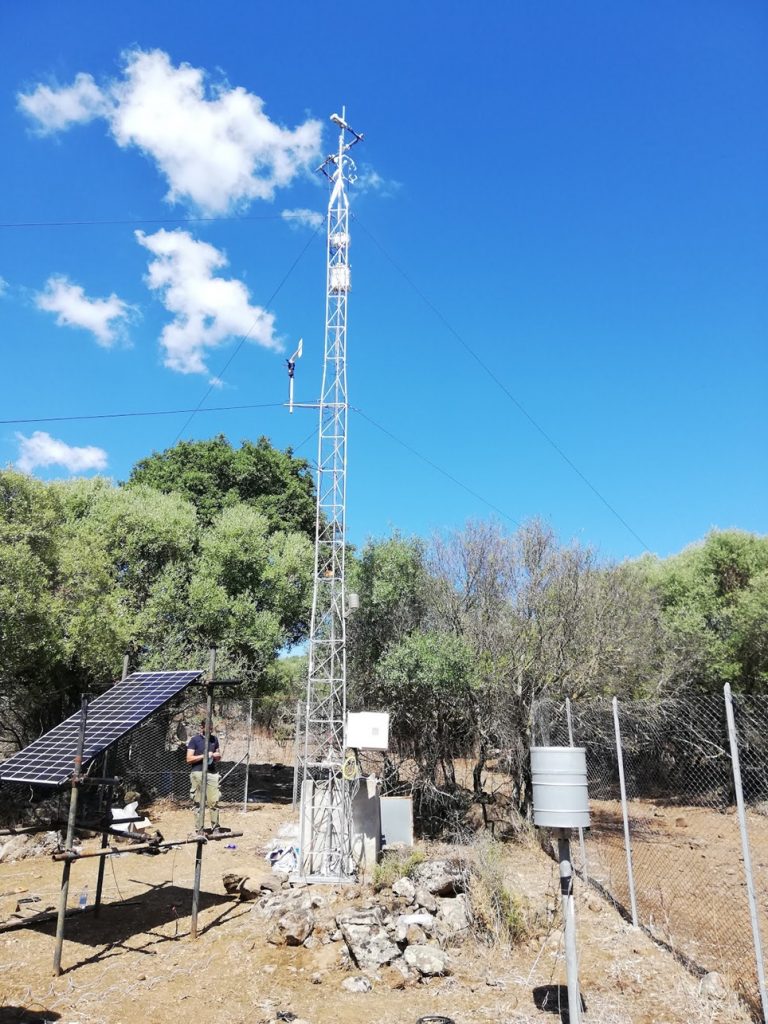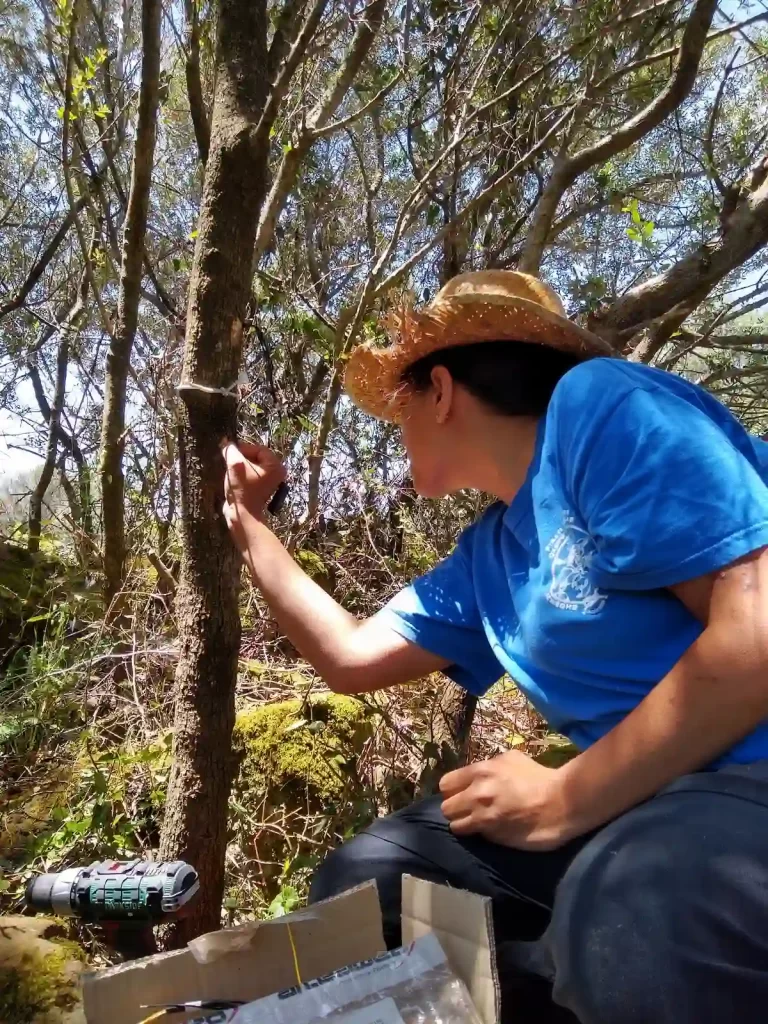Orroli site (Italy)

The Orroli field site is located within the Flumendosa basin. The site has been monitored by the University of Cagliari since 2003. In September 2020 a new 10 m micrometeorological tower was installed. The site is covered by a patchy mixture of tree clumps with canopy cover of ~33% of the footprint area, and inter-clump area displaying herbaceous and grass species during the wet season, transitioning to dry soil surface during the principally rainless summer. The dominating wild olive in tree patches average ~4 m in height, with a scattered emergent individuals of Quercus suber and shorter shrubs; vines often climb the trees.

The micrometeorological tower includes a Campbell Scientific CSAT-3 sonic anemometer and a Licor-7500 CO2/H2O infrared gas analyzer at 10 m above ground to measure velocity, temperature, and gas concentrations at 10 Hz for the estimation of latent heat, and sensible heat fluxes through standard eddy-correlation methods. Skin temperature of the tree canopy and grass/bare soil patches (using IRTS-P by Apogee Instrument), incoming and outgoing shortwave and longwave radiation to derive net radiation (using CNR-1 by Kipp&Zonen), and soil heat flux and temperature (using HFT3 REBS) at two locations close to the eddy-covariance tower, combined to generate the energy budget, were monitored and half-hourly means were recorded. Photosynthetically active radiation (PAR) is measured with a SQ-110-SS Quantum Sensor (Apogee instruments, Logan, UT, USA).

To provide a robust estimation of evapotranspiration, 20 Granier’s thermo-dissipation probes are installed in three trunk and 3 are installed in the roots. Precipitation is measured using a PMB2 CAE rain gauge. Seven frequency domain reflectometer probes (FDR, Campbell Scientific Model CS-616) are inserted in the soil close to the tower (3.3-5.5 m away) to estimate moisture at half-hourly intervals. The site is monitored by UNICA since 2003, and the instrumentation was maintained and reinstalled in September 2020.
